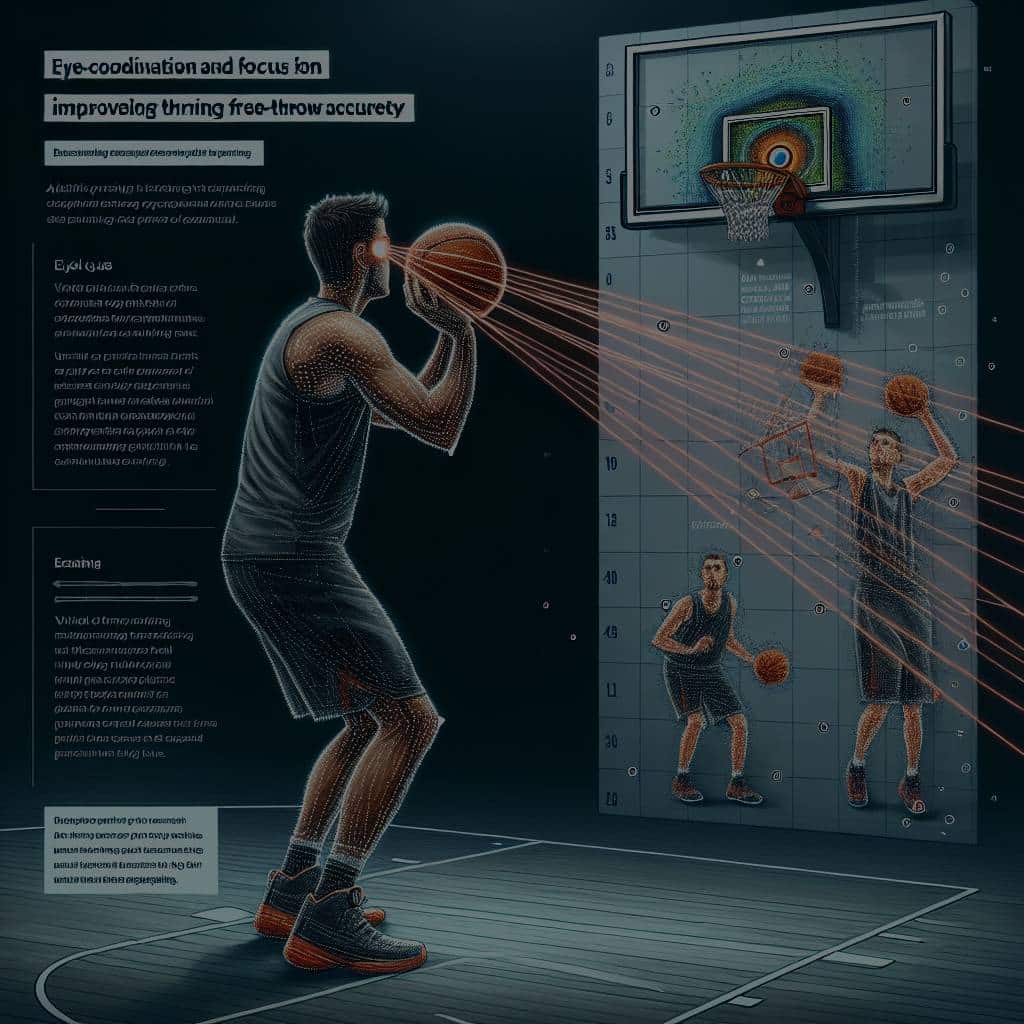How Can Eye-Tracking Technology Improve Free-Throw Accuracy in Basketball?

In the world of basketball, every shot counts. One missed opportunity could signal the difference between an exciting victory or a disheartening defeat. Specifically, free throws, often seen as a straightforward task, can turn out to be a challenging feat even for seasoned players. This is where eye-tracking technology comes into play. By understanding and leveraging the crucial role of visual fixation in executing an effective free throw, players can significantly improve their shooting performance.
Through this article, you will delve into the science behind eye-tracking technology, how it is used in sports training, particularly in basketball, and the remarkable impact it can have on free-throw accuracy.
A lire également : How Does Functional Electrical Stimulation Aid Recovery in Paralyzed Athletes?
The Science Behind Eye-Tracking Technology
Before we explore its application in basketball, let’s examine the technology itself. Eye-tracking technology, essentially, uses infrared sensors to measure where the gaze is fixated and the movement of the pupil. These measurements enable researchers and scholars to examine where, when, and what people look at, providing valuable insights into human behavior.
For instance, Google has leveraged eye-tracking technology to evaluate usability and improve the overall user experience on its platforms. Similarly, in basketball, this experimental technology can help in studying the visual strategies of the players, allowing coaches and trainers to adjust and improve training methods.
Lire également : How Can a Focus on Mental Health Change the Culture of Professional Boxing?
The Importance of Visual Fixation in Basketball
In basketball, the act of shooting the ball towards the hoop requires a complex coordination of motor skills. Visual fixation plays a pivotal role in this task. According to a study indexed in Crossref, the final glance or fixation of the eye on the target before shooting is crucial to the successful execution of a free throw.
It is during this final fixation, that the brain gathers the last bits of information about the target’s location. This information is then used to guide the motor action of shooting. In essence, the longer and more stable this final fixation is, the better the chances of making a successful shot.
Eye-Tracking Technology in Sports Training
In the realm of sports training, eye-tracking technology is increasingly being used to evaluate and enhance player performance. Coaches and trainers can leverage the data gathered from these devices to scrutinize the visual strategies of players, allowing for personalized and more targeted training.
For instance, during basketball training sessions, coaches can have players wear eye-tracking goggles while performing free throws. The data gathered can provide insights about where the players are looking before and during their shot, how long they are fixating on the target, and the timing of their gaze shifts. Such insights can be instrumental in identifying visual habits that might be detrimental to accurate shooting, thus enabling correction and improvement.
Eye-Tracking and Basketball: An Experimental Approach
In the context of basketball, eye-tracking technology can be used in an experimental approach to improve free-throw accuracy. To do this, players would first need to be divided into groups. One group would continue their regular training regime, while the other would be provided with eye-tracking devices to monitor and adjust their visual fixation during free throw practice.
Over time, researchers can compare the performance of the two groups. Based on the difference in their free-throw accuracy, they can determine the effectiveness of eye-tracking technology in improving free-throw shooting.
Moreover, researchers can identify visual strategies that correlate with successful free throws and disseminate this information to coaches and players. This way, players can consciously practice and incorporate these strategies into their shooting habits, potentially boosting their performance in actual games.
The Final Shot: Seeing is Believing
In basketball, the importance of a free throw cannot be understated. A missed free throw can change the dynamics of a game, especially in the final moments when the pressure is mounting. Therefore, it is crucial to invest in technologies and training methods that can enhance free-throw performance.
By integrating eye-tracking technology into basketball training, players can gain valuable insights into their visual habits, enabling them to fine-tune their free throw shooting. As the saying goes, "Seeing is believing." In basketball, seeing the hoop correctly and at the right time could very well be the game changer.
Evaluating the Influence of Pressure on Free-Throw Performance
In the complex world of basketball, it’s commonly known that pressure significantly affects a player’s performance. Pressure comes from various sources – the crowd, the opponent, the score, the time left, and personal expectations. This pressure can often distort the player’s visual perception, leading to a decrease in free-throw accuracy.
Interestingly, research, including a study referenced on PubMed Crossref, has suggested that the ability to maintain a steady gaze or a ‘quiet eye’ on the target under pressure is a characteristic of highly skilled players. The ‘quiet eye’ is a term from motor learning that refers to the final fixation or tracking gaze located on a specific location or object in the task environment within 3° visual angle for a minimum of 100 ms.
This is where eye-tracking technology comes into play. By recognizing and understanding the impact of pressure on a player’s gaze behavior, coaches and trainers can devise strategies and training methods to help players maintain their ‘quiet eye’ under varying levels of pressure.
During high-pressure scenarios in training, the eye-tracking devices can provide invaluable data about the players’ visual search patterns and fixation duration. For instance, if a player tends to shift their gaze away from the hoop as the pressure mounts, targeted training can help them sustain their visual fixation on the target, thereby improving their free-throw performance under pressure.
Eye-Tracking Technology: The Future of Basketball Training
Since the need for accurate free throws in basketball is ever-present and the impact of visual fixation on shooting performance has been scientifically validated, it is clear that eye-tracking technology can be a powerful tool for basketball training.
By wearing eye-tracking goggles, players can receive real-time feedback about their visual habits, enabling them to identify and correct detrimental visual strategies. This technology not only provides insights into what the player is physically seeing but also offers a peek into their cognitive processes. As such, the use of eye-tracking technology in basketball training represents a significant step forward in the advancement of sports training technologies.
Furthermore, eye-tracking technology can also be used in research to further our understanding of visual behaviors in basketball. Such research, accessible on platforms like Google Scholar and Crossref Google, can help unravel the strategies used by expert groups of basketball players, providing valuable insights that can be used to enhance the training methodologies.
Eye on the Prize: Enhancing Free-Throw Performance
In conclusion, the impact of eye-tracking technology on improving free-throw accuracy in basketball can be immense. By focusing on visual fixation and understanding the importance of the ‘quiet eye’ in successful free-throw shooting, players can transform their performance.
Eye-tracking technology not only provides a scientific approach to understanding and improving basketball shooting but it also gives players a unique opportunity to ‘see’ their mistakes and correct them.
In the high-stakes scenario of a basketball game where every point counts, the ability to consistently deliver accurate free throws could mean the difference between winning and losing. As basketball continues to evolve, leveraging eye-tracking technology could prove to be a game-changer, helping players to keep their eye on the prize – both literally and figuratively.
